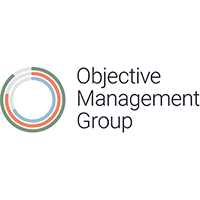 As a sales manager, you need to understand the health of your pipeline to do your job since your management will want you to know many of the details to test your thinking. You will need to spend time with each sales rep on a regular basis to gather information on their lead generation activities and the quality of their pipeline to forecast accurately. However, many sales people are story tellers and want to tell you about every nuance of each conversation with their buyers. Is sales storytelling the best utilization of everyone’s time?
As a sales manager, you need to understand the health of your pipeline to do your job since your management will want you to know many of the details to test your thinking. You will need to spend time with each sales rep on a regular basis to gather information on their lead generation activities and the quality of their pipeline to forecast accurately. However, many sales people are story tellers and want to tell you about every nuance of each conversation with their buyers. Is sales storytelling the best utilization of everyone’s time?
It may make the sales rep feel good about telling the story – regaling every minute detail of the conversation to ensure everyone, including the sales manager, truly understands all they have learned in their fact-finding missions. However, most sales managers have multiple sales reps reporting to them and the storytelling can take up much precious time with little benefit to either the sales manager or the sales rep.
How many times have you been in a review session where the amount of detail was just not necessary? As a sales manager, you are trying to gather the right details to validate the forecast and ensure you can explain any idiosyncrasies to your management. But storytelling can get in the way.
Now, if your sales process includes verifiable outcomes or leading indicators to determine the engagement level of the buyer(s) at each stage of the sales process, asking high-yield coaching questions to test the validity of each buyer’s engagement will provide you with a clearer picture as to what is real or not real in the forecast. Here are a few examples of key questions you can ask your sales reps to help turn a lengthy story into a valuable review session:
- What industry drivers/trends created interest to the prospect?
- Who are the key stakeholders, and what are their roles/hot buttons and their buying process priorities?
- Have you validated/confirmed the solution proposed by the prospect and by whom?
- With whom did you debrief after the presentation and what were their comments/recommendations?
- What is the timeline for closing the deal and implementing? How will they deem success?
By asking questions that test the engagement of the buyer, you will be able to get a clearer picture, in a very succinct way, to best understand where deals are in the pipeline. Not because the sales rep told you so, but because the buyer’s level of engagement told you a much clearer “story” of where things stand from the buyer’s point of view. And without storytelling getting in the way, you’ll have a more accurate view of your forecast.
 Janice Mars, principal and founder of SalesLatitude, is a senior business and sales executive with more than 30 years of experience helping companies build successful sales teams. She has parlayed that experience to help her clients to improve their sales processes, accurately forecast revenues, ensure focus on winnable opportunities, and attain consistent results. View my LinkedIn profile | Twitter
Janice Mars, principal and founder of SalesLatitude, is a senior business and sales executive with more than 30 years of experience helping companies build successful sales teams. She has parlayed that experience to help her clients to improve their sales processes, accurately forecast revenues, ensure focus on winnable opportunities, and attain consistent results. View my LinkedIn profile | Twitter






